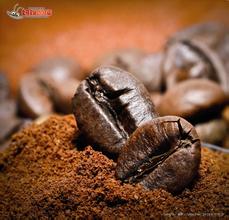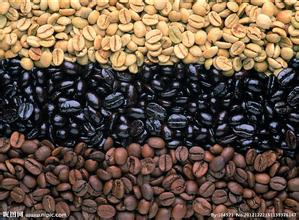Introduction of washable Arabica Casitama Coffee Bean production area treatment Manor
Introduction of washable Arabica Casitama Coffee Bean production area treatment Manor
"Ethiopian Sidamo" is a type of single origin and grows in Arabica coffee in Ethiopia's Sidamo province. Like coffee in most African countries, Ethiopian Sidamo is characterized by small gray beans, but characterized by its rich, spicy, wine or chocolate-like taste and floral aroma. The most distinctive flavors found in all Sidamo coffee are lemon and citrus with bright and crisp acidity. Sidamo Coffee includes Yirgachefe Yega Snow Coffee and guji Coffee. The main producing areas of Ethiopian coffee are Harar in the east, Djimmah in the southwest and Sidamo in the south.
Water-washed coffee flavor is not easy to have wild flavor, with pure, refreshing characteristics, suitable for City to Full City baking degree; some essential excellent Ethiopian water-washed coffee beans, sometimes can be detected obvious rising lemon, citrus essential oil, jasmine, honey and so on, the sour taste is obvious, mellow and thin. All kinds of mocha beans treated in the sun have wild flavor in the basic flavor, but the degree is more or less different, so it is more suitable for the baking degree from Full City to Vienna. The essence of the excellent sun, mocha beans, its tail will have a clear Hey chocolate flavor, some have a delightful blueberry-like fermented fruit and red wine texture
The classification system in Ethiopia is still very backward, so it can be classified as special class (usually referred to as Yirgacheffe and Sidamo), level 1, level 2, level 3, level 4 and level 5.
In Ethiopia, Japanese beans are usually found, such as small stones or sticks, so special attention should be paid to grinding.

Important Notice :
前街咖啡 FrontStreet Coffee has moved to new addredd:
FrontStreet Coffee Address: 315,Donghua East Road,GuangZhou
Tel:020 38364473
- Prev

Introduction to the characteristics, varieties and producing areas of fine coffee beans in Uganda
After the first World War, the long-standing dissatisfaction of the Ugandan people with colonial rule finally broke out. A national general strike and rural riots broke out in 1918. In 1919 Buganda launched a democratic movement under the leadership of the Bataka Party and the African Farmers' Union of Uganda. In 1921, Uganda's first national political party, the Ugandan National Congress Party, was established and proposed the implementation of universal suffrage.
- Next

Introduction of Starbucks Coffee Bean scale 4-level treatment method
Starbucks Mill Coffee Bean scale 4 level treatment method introduction 1. Buy a fully automatic coffee maker and fresh espresso beans (order-baked or Rabasa illy beans on Taobao) 2. Buy coffee capsule machine and the corresponding capsule machine, the former thousands to tens of thousands; the latter more than a thousand coffee capsules are generally more expensive than fresh coffee beans, fresh coffee beans about 100 pounds can do 4.
Related
- Detailed explanation of Jadeite planting Land in Panamanian Jadeite Manor introduction to the grading system of Jadeite competitive bidding, Red bid, Green bid and Rose Summer
- Story of Coffee planting in Brenka region of Costa Rica Stonehenge Manor anaerobic heavy honey treatment of flavor mouth
- What's on the barrel of Blue Mountain Coffee beans?
- Can American coffee also pull flowers? How to use hot American style to pull out a good-looking pattern?
- Can you make a cold extract with coffee beans? What is the right proportion for cold-extracted coffee formula?
- Indonesian PWN Gold Mandrine Coffee Origin Features Flavor How to Chong? Mandolin coffee is American.
- A brief introduction to the flavor characteristics of Brazilian yellow bourbon coffee beans
- What is the effect of different water quality on the flavor of cold-extracted coffee? What kind of water is best for brewing coffee?
- Why do you think of Rose Summer whenever you mention Panamanian coffee?
- Introduction to the characteristics of authentic blue mountain coffee bean producing areas? What is the CIB Coffee Authority in Jamaica?

